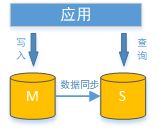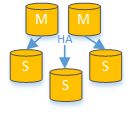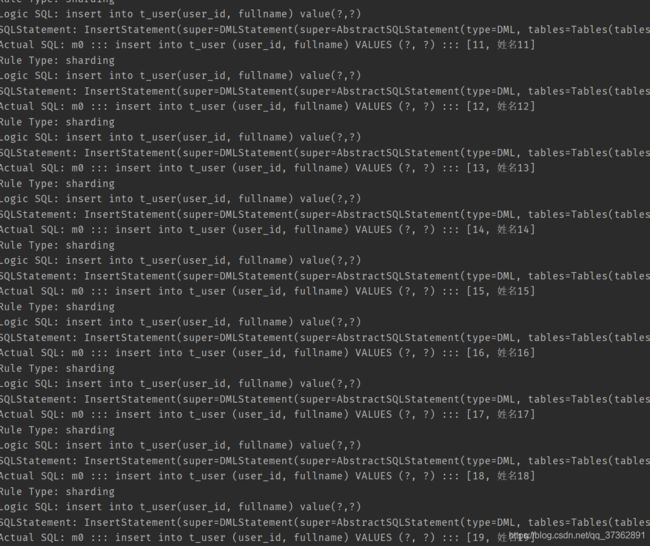- 如何通过 Apache SeaTunnel 实现 MySQL 到 OceanBase的数据迁移同步
SeaTunnel
apachemysqloceanbase
本文来源于OceanBase数据库官方博客,目前ApacheSeaTunnel2.3.9已支持本文提到的所有功能,故原文2.3.7已全部修改为2.3.9准备传输工具本方案采用ApacheSeaTunnel(简称SeaTunnel)进行MySQL到OceanBase的数据迁移和同步,出于对方案轻量性的考量,我们采用其内置的Zeta引擎来实现,包括全量同步、离线增量同步,以及CDC方案。运行环境准备自
- 【实操回顾】基于Apache SeaTunnel从MySQL同步到PostgreSQL——Demo方舟计划
SeaTunnel
apachemysqlpostgresql
文章作者:马全才奥克斯集团大数据工程师编辑整理:国电南自赵鸿辉白鲸开源曾辉本文详细演示了如何通过ApacheSeaTunnel2.3.9实现**MySQL**到PostgreSQL的全量数据同步。非常感谢马全才老师花费业余时间为大家演示制作的Demo,也欢迎更多朋友贡献自己熟悉的同步场景,详细请参考社区Demo方舟活动:https://mp.weixin.qq.com/s/5gpiZZ0-8a4I
- 基于oracle linux的 DBI/DBD 标准化安装文档(六)
oracle
一、安装DBIDBI(DatabaseInterface)是perl连接数据库的接口。其是perl连接数据库的最优方法,他支持包括Orcale,Sybase,mysql,db2等绝大多数的数据库,下面将简要介绍其安装方法。1.1解压tar-zxvfDBI-1.616_901.tar.gz1.2安装依赖yuminstallperl-ExtUtils-CBuilderperl-ExtUtils-Mak
- 莫名锁表? --- mysql的事务隔离级别
程序员小软
mysql数据库java
前言系统响应超时系统访问数据库特别慢莫名提示锁等待超时数据库锁表事务长时间等锁,直到超时以上问题都可能是事务锁表导致的问题今天测试反馈系统批量处理莫名提示锁等待超时,再次操作查看数据库事务确实存在等锁情况,甚至死锁。刚开始是偶尔出现,后来一直就是死锁,导致其他操作也操作不了。刚开始发现数据库中操作插入的时候会进入锁等待怀疑是这张表中主键自增导致的锁表,于是将表改为指定主键,问题依然存在。后来想起来
- MySQL数据库架构设计:分片与分区策略实战
墨瑾轩
一起学学数据库【一】mysql数据库架构adb
关注墨瑾轩,带你探索编程的奥秘!超萌技术攻略,轻松晋级编程高手技术宝库已备好,就等你来挖掘订阅墨瑾轩,智趣学习不孤单即刻启航,编程之旅更有趣在数据库的魔法森林中,MySQL就像是一位智慧的老树精,而分片(Sharding)与分区(Partitioning)则是它手中的两把神秘钥匙,能够打开数据高效存储与快速检索的大门。今天,我们就一起踏上一场奇幻之旅,探索如何运用这两把钥匙,打造一个既强大又灵活的
- MySQL探秘之旅:总体架构介绍
互联网全栈架构
mysql架构数据库
欢迎关注微信公众号:互联网全栈架构自从《吃透Redis系列》阅读量屡创新高之后,更加坚定了创作技术系列文章的决心,从而让朋友们获得更加体系化的知识。当然,这是一件非常不容易的事情,让每篇文章都能单独成篇且质量上乘,同时,把它们连起来以后又能构成一个体系,着实困难。但不管如何,我觉得这样的方向和做法没有问题,应该会受到大家的欢迎,那就迎难而上。上次做了一个统计,相对来说,大家对于MySQL的文章比较
- 超详细:数据库的基本架构
m0_74824661
面试学习路线阿里巴巴数据库架构
MySQL基础架构下面这个图是我给出的一个MySQL基础架构图,可以清楚的了解到SQL语句在MySQL的各个模块进行执行过程。然后MySQL可以分为两个部分,一个是server层,另一个是存储引擎。server层Server层涵盖了MySQL的大多数核心服务功能,以及所有的内置函数(如日期、时间、数学和加密函数等)。所有跨存储引擎的功能都在这一层实现,比如存储过程、触发器、视图等。Server层主
- MYSQL8.0数据库误删除记录恢复 MYSQL8.0数据库崩溃恢复 MYSQL8.0数据库删除表恢复
caihuayuan5
面试题汇总与解析大数据springbootjava后端课程设计
数据类型MYSQL8.0数据大小242MB故障检测主机断电导致数据库崩溃,无法启动.修复结果收到文件后,修正不一致的地方,成功启动MYSQL8.0完成恢复客户验收数据成功。完成恢复。最新数据得以恢复.客户非常满意。友情提醒:重要数据一定要勤备份,遇到数据丢失数据损坏等问题,要第一时间联系专业人士。对于各类主流数据库,我们可以做最底层的数据恢复及数据修复,对于数据库的某些特定故障我们保证数据库100
- python+MySQL+HTML实现自习室座位管理系统
IT小本本
pythonpythonmysqlhtml
自习室座位管理系统项目介绍自习室座位管理系统是一个基于PythonFlask框架开发的Web应用,旨在提供高效、便捷的自习室座位预约和管理功能。该系统适用于学校图书馆、自习室等场所,帮助管理员有效管理座位资源,同时为学生提供便捷的座位预约服务。功能特点1、用户认证模块用户注册:学生可以注册账号,填写个人信息用户登录:支持学生和管理员登录找回密码:通过邮箱验证重置密码2、座位管理模块座位预约:学生可
- 基于oracle linux的 DBI/DBD 标准化安装文档(二)
文档
一、安装DBIDBI(DatabaseInterface)是perl连接数据库的接口。其是perl连接数据库的最优方法,他支持包括Orcale,Sybase,mysql,db2等绝大多数的数据库,下面将简要介绍其安装方法。1.1解压tar-zxvfDBI-1.616_901.tar.gz1.2安装依赖yuminstallperl-ExtUtils-CBuilderperl-ExtUtils-Mak
- 数据库:SQLite/MySQL/PostgreSQL 的破圈之战
程序员
数据库类型对比维度SQLiteMySQLPostgreSQL类型嵌入式数据库关系型数据库管理系统(RDBMS)对象-关系型数据库(ORDBMS)架构无服务端,单文件存储客户端-服务器架构客户端-服务器架构事务支持ACID兼容(默认启用)ACID兼容(需使用InnoDB引擎)完整ACID兼容并发处理写操作全局锁行级锁+MVCC(InnoDB)多版本并发控制(MVCC)扩展性单机,适合轻量级应用支持主
- MySQL:多表查询、笛卡尔积、内连接、外连接、子查询
平安1113
MySQLmysqlsql数据库
多表查询同时查询多张表获取到需要的数据例如:查询到开发部有多少人,需要对部门表dept和员工表emp同时进行查询笛卡尔积对上图两张表进行查询select*fromemp,dept;左表中的数据分别和右表中的数据进行结合,查询出来的总记录为:左表记录数*右表记录数总记录数为6*3=18条清除笛卡尔积清除笛卡尔积需要使用等值连接,过滤掉不符合条件的数据select*fromemp,deptwhere<
- 【Mysql数据库 第6章】MySQL的多表操作—多表联合查询、子查询、内外连接
KJ.JK
数据库mysql内连接外连接mysql的子查询
文章目录往期精彩知识1、多表联合查询介绍2、交叉连接查询3、内连接查询4、外连接查询(1)外连接介绍(2)左外连接(3)右外连接(4)满外连接综合代码演示5、子查询(1)子查询的介绍和特点(2)子查询的关键字all关键字any和some关键字in关键字exists关键字6、自关联查询作者:KJ.JK往期精彩知识Spring中的创建对象的三种方式、第三方资源配置管理详细描述及使用(XML版完结篇)S
- GBase8c aes_encrypt和aes_decrypt函数
keep__go
GBase8c数据库gbase
在数据库中,aes_encrypt和aes_decrypt函数进行加解密时使用的块加密模式。GBase8c与MySQL的aes_encrypt和aes_decrypt函数区别:1、GBase8c中的初始化向量init_vector不能为空2、MySQL的加密模块block_encryption_mode为aes-128-ecb,GBase8c不支持aes-128-ecb,默认加密模块为aes-12
- MYSQL数据备份与恢复(mysqldump)
一诚学编程
mysqlmysql数据库linuxadb
MySQL备份之mysqldump表级别备份还原格式:mysqldump[OPTIONS]database[tables]实例:把db_user数据库中的tb_student数据表进行备份备份:#mysqldumpdb_usertb_student>/tmp/sqlbak/tb_student.sql-p还原:#mysql数据库名称/tmp/sqlbak/db_itheima.sql-p还原:#m
- MySQL---DDL(3.17)
秋凉 づᐇ
mysqloracle数据库
1、DDL-数据库操作查询:查询所有数据库:SHOWDATABASES;查询当前数据库:SELECTDATABASE();创建:CREATEDATABASE[IFNOTEXISTS]数据库名[DEFAULTCHARSET字符集][COLLATE排序规则];删除:DROPDATABASE[IFEXISTS]数据库名;使用:USE数据库名;2、DDL--表操作-查询查询当前数据库所有表:SHOWTAB
- nodejs+mysql分页查询
m0_67987829
mysql前端node.js
router:(参数page,size)goodsRouter.get("/getList",getGoodsList)controllerasyncgetGoodsList(ctx,next){const{page,size}=ctx.query;//获取查询参数//将page和size转换为数字类型constparsedPage=parseInt(page);constparsedSize=p
- sequelize + Nodejs + MySQL 的简单用法
小公鸡卡哇伊呀~
mysql数据库
HowtoUseSequelizeORMinNodeJS-Tutorial1Sequlize简介Sequelize是最流行的可以与Nodejs一起使用的一种关系数据库ORM(Object-relationalmapping对象关系映射),Mongoose是MongoDB的ORM.Sequelize的作用,简单地说,就是避免在代码里写原生SQL语句,而是将这种语句改成JavaScript:不必再写类
- MySQL0基础概念4
wqx951
mysqlsql
MySQL体系结构概述1.MySQL系统的重要组件包括连接管理器、线程管理器、命令分发器。2.连接管理器负责接收用户请求,转交给线程管理器,验证用户访问。3.用户请求包括查询命令,这些命令由命令分发器处理,如交友、缓存、解析结果或记录用户行为。MySQL查询处理流程1.查询处理流程包括高速缓存查询、词法分析、语法分析、结果缓存检查和分析后结果处理。2.如果查询结果在缓存中,直接返回缓存结果;否则,
- 基于oracle linux的 DBI/DBD 标准化安装文档(四)
linux
一、安装DBIDBI(DatabaseInterface)是perl连接数据库的接口。其是perl连接数据库的最优方法,他支持包括Orcale,Sybase,mysql,db2等绝大多数的数据库,下面将简要介绍其安装方法。1.1解压tar-zxvfDBI-1.616_901.tar.gz1.2安装依赖yuminstallperl-ExtUtils-CBuilderperl-ExtUtils-Mak
- mysql中json数组对象mybatis如何自动映射
需求:假如数据库某个表的一个字段是json数据类型,字段名是students,类型是,存的是json格式的学生数组,现要用一个List来接收,如何实现自动转换.1.实现TypeHandlerwhy?如果json字段存的是数组,直接使用"com.baomidou.mybatisplus.extension.handlers.FastjsonTypeHandler"会给你转成List类型;所以需要自己
- wordpress导入mysql数据库文件的方法及注意事项
wodrpress资源分享
wordpress数据库mysqlwordpress
WordPress是一个流行的开源内容管理系统,通常用于构建网站和博客。它使用MySQL数据库来存储和管理网站数据。在某些情况下,您可能需要将现有的MySQL数据库导入到新的WordPress安装中。本文将介绍如何导入MySQL数据库文件到WordPress以及需要注意的事项。一、备份现有数据库在进行任何数据库导入操作之前,强烈建议您先备份现有的数据库。这样可以确保在导入过程中出现问题时,您不会丢
- doris:认证与鉴权概述
向阳1218
大数据doris
Doris的权限管理系统参照了MySQL的权限管理机制,做到了行级别细粒度的权限控制,基于角色的权限访问控制,并且支持白名单机制。名词解释用户标识UserIdentity在权限系统中,一个用户被识别为一个UserIdentity(用户标识)。用户标识由两部分组成:username和host。其中username为用户名,由英文大小写组成。host表示该用户链接来自的IP。UserIdentity以
- 【go从入门到精通】探秘struct结构体转json为什么需要首字母大写?
前网易架构师-高司机
golang从入门到精通golangjsongo结构体首字母大写golang从入门到精通go从入门到精通
目录作者简介:问题抛出分析结论作者简介:高科,先后在IBMPlatformComputing从事网格计算,淘米网,网易从事游戏服务器开发,拥有丰富的C++,go等语言开发经验,mysql,mongo,redis等数据库,设计模式和网络库开发经验,对战棋类,回合制,moba类页游,手游有丰富的架构设计和开发经验。并且深耕深度学习和数据集训练,提供商业化的视觉人工智能检测和预警系统(煤矿,工厂,制造业
- ubuntu 24.10安装mysql
linuxxx110
ubuntumysql
1.更新软件包列表在安装MySQL之前,先更新系统的软件包列表sudoaptupdate2、安装MySQL服务器sudoaptinstallmysql-server3.启动MySQL服务sudosystemctlstatusmysql4、运行安全脚本MySQL提供了一个安全脚本,用于设置root密码、移除匿名用户、禁止远程root登录等。运行以下命令sudomysql_secure_install
- SQLite?低调不是小众...
架构文摘JGWZ
sqlite数据库学习后端
前几天在一个群里看到一位同学说:“SQLite这么小众的数据库,到底是什么人在用啊?”首先要说的是SQLite可不是小众的数据库,相反,SQLite是世界上装机量最多的数据库,远超MySQL,只不过比较低调而已。低调到我想在官网上找一个好看的用来当插图的图片都找不到,只能截一张官网首页来撑一撑,看起来十分朴素。我最早听说SQLite是刚毕业工作的时候,我们部门做微软内容管理产品的二次开发,其中有一
- docker mysql 迁移_Docker跨服务器迁移
weixin_39687468
dockermysql迁移
Docker跨服务器迁移Docker的备份方式有export和save两种。export是当前的状态,针对的是容器,dockersave是针对镜像images。一、镜像的迁移—save1.镜像保存登陆到已经部署好镜像的服务器上面,执行以下命令进行导出[root@snowedfiles_backup]#dockersave97fd>docker-image-mysql-5.6.40.tar2.将镜像
- mysql迁移docker_docker迁入迁出mysql
困困斐
mysql迁移docker
docker迁出mysql数据库测试环境:docker服务器mysql服务器IP192.168.163.19192.168.163.16操作系统CentOS7.8CentOS7.8docker版本Docker18.09.9/数据库版本MySQL8.0.22MySQL8.0.221.查看docker相关情况[root@docker-test/data/mysql/data]$dockerps启动my
- docker迁移mysql_Docker迁移Mysql
麟翛
docker迁移mysql
这几天遇到一个数据迁移的需求,要把老服务器的数据迁移到新的服务器上去,因为Mysql是放在Docker里面的,所以只需要迁移配置文件和数据卷即可,但是这过程中并不是一帆风顺的,特此记录一下。从旧的服务器上查看Mysql容器的信息。首先使用dockerps来查看正在运行的容器,如果你的容器尚未运行,那么执行这条命令dockerps-a使用dockerinspectContainName查看Mysql
- docker容器迁移,以mysql容器为例
风萧易去情难还
dockerdockermysql容器
在容器化环境中,容器迁移是确保应用程序在不同环境中平滑部署和运行的关键。本文将详细介绍如何将一个正在运行的MySQL容器从一台机器迁移到另一台机器。特别内网安装数据库等软件时,所需依赖和工具下载困难,可以通过镜像迁移方式完成软件安装。一、准备工作在开始迁移之前,我们需要准备以下几项工作:源机器(A机器):正在运行的MySQL容器。#拉取mysql镜像dockerpullmysql:8.0.25#创
- Java常用排序算法/程序员必须掌握的8大排序算法
cugfy
java
分类:
1)插入排序(直接插入排序、希尔排序)
2)交换排序(冒泡排序、快速排序)
3)选择排序(直接选择排序、堆排序)
4)归并排序
5)分配排序(基数排序)
所需辅助空间最多:归并排序
所需辅助空间最少:堆排序
平均速度最快:快速排序
不稳定:快速排序,希尔排序,堆排序。
先来看看8种排序之间的关系:
1.直接插入排序
(1
- 【Spark102】Spark存储模块BlockManager剖析
bit1129
manager
Spark围绕着BlockManager构建了存储模块,包括RDD,Shuffle,Broadcast的存储都使用了BlockManager。而BlockManager在实现上是一个针对每个应用的Master/Executor结构,即Driver上BlockManager充当了Master角色,而各个Slave上(具体到应用范围,就是Executor)的BlockManager充当了Slave角色
- linux 查看端口被占用情况详解
daizj
linux端口占用netstatlsof
经常在启动一个程序会碰到端口被占用,这里讲一下怎么查看端口是否被占用,及哪个程序占用,怎么Kill掉已占用端口的程序
1、lsof -i:port
port为端口号
[root@slave /data/spark-1.4.0-bin-cdh4]# lsof -i:8080
COMMAND PID USER FD TY
- Hosts文件使用
周凡杨
hostslocahost
一切都要从localhost说起,经常在tomcat容器起动后,访问页面时输入http://localhost:8088/index.jsp,大家都知道localhost代表本机地址,如果本机IP是10.10.134.21,那就相当于http://10.10.134.21:8088/index.jsp,有时候也会看到http: 127.0.0.1:
- java excel工具
g21121
Java excel
直接上代码,一看就懂,利用的是jxl:
import java.io.File;
import java.io.IOException;
import jxl.Cell;
import jxl.Sheet;
import jxl.Workbook;
import jxl.read.biff.BiffException;
import jxl.write.Label;
import
- web报表工具finereport常用函数的用法总结(数组函数)
老A不折腾
finereportweb报表函数总结
ADD2ARRAY
ADDARRAY(array,insertArray, start):在数组第start个位置插入insertArray中的所有元素,再返回该数组。
示例:
ADDARRAY([3,4, 1, 5, 7], [23, 43, 22], 3)返回[3, 4, 23, 43, 22, 1, 5, 7].
ADDARRAY([3,4, 1, 5, 7], "测试&q
- 游戏服务器网络带宽负载计算
墙头上一根草
服务器
家庭所安装的4M,8M宽带。其中M是指,Mbits/S
其中要提前说明的是:
8bits = 1Byte
即8位等于1字节。我们硬盘大小50G。意思是50*1024M字节,约为 50000多字节。但是网宽是以“位”为单位的,所以,8Mbits就是1M字节。是容积体积的单位。
8Mbits/s后面的S是秒。8Mbits/s意思是 每秒8M位,即每秒1M字节。
我是在计算我们网络流量时想到的
- 我的spring学习笔记2-IoC(反向控制 依赖注入)
aijuans
Spring 3 系列
IoC(反向控制 依赖注入)这是Spring提出来了,这也是Spring一大特色。这里我不用多说,我们看Spring教程就可以了解。当然我们不用Spring也可以用IoC,下面我将介绍不用Spring的IoC。
IoC不是框架,她是java的技术,如今大多数轻量级的容器都会用到IoC技术。这里我就用一个例子来说明:
如:程序中有 Mysql.calss 、Oracle.class 、SqlSe
- 高性能mysql 之 选择存储引擎(一)
annan211
mysqlInnoDBMySQL引擎存储引擎
1 没有特殊情况,应尽可能使用InnoDB存储引擎。 原因:InnoDB 和 MYIsAM 是mysql 最常用、使用最普遍的存储引擎。其中InnoDB是最重要、最广泛的存储引擎。她 被设计用来处理大量的短期事务。短期事务大部分情况下是正常提交的,很少有回滚的情况。InnoDB的性能和自动崩溃 恢复特性使得她在非事务型存储的需求中也非常流行,除非有非常
- UDP网络编程
百合不是茶
UDP编程局域网组播
UDP是基于无连接的,不可靠的传输 与TCP/IP相反
UDP实现私聊,发送方式客户端,接受方式服务器
package netUDP_sc;
import java.net.DatagramPacket;
import java.net.DatagramSocket;
import java.net.Ine
- JQuery对象的val()方法执行结果分析
bijian1013
JavaScriptjsjquery
JavaScript中,如果id对应的标签不存在(同理JAVA中,如果对象不存在),则调用它的方法会报错或抛异常。在实际开发中,发现JQuery在id对应的标签不存在时,调其val()方法不会报错,结果是undefined。
- http请求测试实例(采用json-lib解析)
bijian1013
jsonhttp
由于fastjson只支持JDK1.5版本,因些对于JDK1.4的项目,可以采用json-lib来解析JSON数据。如下是http请求的另外一种写法,仅供参考。
package com;
import java.util.HashMap;
import java.util.Map;
import
- 【RPC框架Hessian四】Hessian与Spring集成
bit1129
hessian
在【RPC框架Hessian二】Hessian 对象序列化和反序列化一文中介绍了基于Hessian的RPC服务的实现步骤,在那里使用Hessian提供的API完成基于Hessian的RPC服务开发和客户端调用,本文使用Spring对Hessian的集成来实现Hessian的RPC调用。
定义模型、接口和服务器端代码
|---Model
&nb
- 【Mahout三】基于Mahout CBayes算法的20newsgroup流程分析
bit1129
Mahout
1.Mahout环境搭建
1.下载Mahout
http://mirror.bit.edu.cn/apache/mahout/0.10.0/mahout-distribution-0.10.0.tar.gz
2.解压Mahout
3. 配置环境变量
vim /etc/profile
export HADOOP_HOME=/home
- nginx负载tomcat遇非80时的转发问题
ronin47
nginx负载后端容器是tomcat(其它容器如WAS,JBOSS暂没发现这个问题)非80端口,遇到跳转异常问题。解决的思路是:$host:port
详细如下:
该问题是最先发现的,由于之前对nginx不是特别的熟悉所以该问题是个入门级别的:
? 1 2 3 4 5
- java-17-在一个字符串中找到第一个只出现一次的字符
bylijinnan
java
public class FirstShowOnlyOnceElement {
/**Q17.在一个字符串中找到第一个只出现一次的字符。如输入abaccdeff,则输出b
* 1.int[] count:count[i]表示i对应字符出现的次数
* 2.将26个英文字母映射:a-z <--> 0-25
* 3.假设全部字母都是小写
*/
pu
- mongoDB 复制集
开窍的石头
mongodb
mongo的复制集就像mysql的主从数据库,当你往其中的主复制集(primary)写数据的时候,副复制集(secondary)会自动同步主复制集(Primary)的数据,当主复制集挂掉以后其中的一个副复制集会自动成为主复制集。提供服务器的可用性。和防止当机问题
mo
- [宇宙与天文]宇宙时代的经济学
comsci
经济
宇宙尺度的交通工具一般都体型巨大,造价高昂。。。。。
在宇宙中进行航行,近程采用反作用力类型的发动机,需要消耗少量矿石燃料,中远程航行要采用量子或者聚变反应堆发动机,进行超空间跳跃,要消耗大量高纯度水晶体能源
以目前地球上国家的经济发展水平来讲,
- Git忽略文件
Cwind
git
有很多文件不必使用git管理。例如Eclipse或其他IDE生成的项目文件,编译生成的各种目标或临时文件等。使用git status时,会在Untracked files里面看到这些文件列表,在一次需要添加的文件比较多时(使用git add . / git add -u),会把这些所有的未跟踪文件添加进索引。
==== ==== ==== 一些牢骚
- MySQL连接数据库的必须配置
dashuaifu
mysql连接数据库配置
MySQL连接数据库的必须配置
1.driverClass:com.mysql.jdbc.Driver
2.jdbcUrl:jdbc:mysql://localhost:3306/dbname
3.user:username
4.password:password
其中1是驱动名;2是url,这里的‘dbna
- 一生要养成的60个习惯
dcj3sjt126com
习惯
一生要养成的60个习惯
第1篇 让你更受大家欢迎的习惯
1 守时,不准时赴约,让别人等,会失去很多机会。
如何做到:
①该起床时就起床,
②养成任何事情都提前15分钟的习惯。
③带本可以随时阅读的书,如果早了就拿出来读读。
④有条理,生活没条理最容易耽误时间。
⑤提前计划:将重要和不重要的事情岔开。
⑥今天就准备好明天要穿的衣服。
⑦按时睡觉,这会让按时起床更容易。
2 注重
- [介绍]Yii 是什么
dcj3sjt126com
PHPyii2
Yii 是一个高性能,基于组件的 PHP 框架,用于快速开发现代 Web 应用程序。名字 Yii (读作 易)在中文里有“极致简单与不断演变”两重含义,也可看作 Yes It Is! 的缩写。
Yii 最适合做什么?
Yii 是一个通用的 Web 编程框架,即可以用于开发各种用 PHP 构建的 Web 应用。因为基于组件的框架结构和设计精巧的缓存支持,它特别适合开发大型应
- Linux SSH常用总结
eksliang
linux sshSSHD
转载请出自出处:http://eksliang.iteye.com/blog/2186931 一、连接到远程主机
格式:
ssh name@remoteserver
例如:
ssh
[email protected]
二、连接到远程主机指定的端口
格式:
ssh name@remoteserver -p 22
例如:
ssh i
- 快速上传头像到服务端工具类FaceUtil
gundumw100
android
快速迭代用
import java.io.DataOutputStream;
import java.io.File;
import java.io.FileInputStream;
import java.io.FileNotFoundException;
import java.io.FileOutputStream;
import java.io.IOExceptio
- jQuery入门之怎么使用
ini
JavaScripthtmljqueryWebcss
jQuery的强大我何问起(个人主页:hovertree.com)就不用多说了,那么怎么使用jQuery呢?
首先,下载jquery。下载地址:http://hovertree.com/hvtart/bjae/b8627323101a4994.htm,一个是压缩版本,一个是未压缩版本,如果在开发测试阶段,可以使用未压缩版本,实际应用一般使用压缩版本(min)。然后就在页面上引用。
- 带filter的hbase查询优化
kane_xie
查询优化hbaseRandomRowFilter
问题描述
hbase scan数据缓慢,server端出现LeaseException。hbase写入缓慢。
问题原因
直接原因是: hbase client端每次和regionserver交互的时候,都会在服务器端生成一个Lease,Lease的有效期由参数hbase.regionserver.lease.period确定。如果hbase scan需
- java设计模式-单例模式
men4661273
java单例枚举反射IOC
单例模式1,饿汉模式
//饿汉式单例类.在类初始化时,已经自行实例化
public class Singleton1 {
//私有的默认构造函数
private Singleton1() {}
//已经自行实例化
private static final Singleton1 singl
- mongodb 查询某一天所有信息的3种方法,根据日期查询
qiaolevip
每天进步一点点学习永无止境mongodb纵观千象
// mongodb的查询真让人难以琢磨,就查询单天信息,都需要花费一番功夫才行。
// 第一种方式:
coll.aggregate([
{$project:{sendDate: {$substr: ['$sendTime', 0, 10]}, sendTime: 1, content:1}},
{$match:{sendDate: '2015-
- 二维数组转换成JSON
tangqi609567707
java二维数组json
原文出处:http://blog.csdn.net/springsen/article/details/7833596
public class Demo {
public static void main(String[] args) { String[][] blogL
- erlang supervisor
wudixiaotie
erlang
定义supervisor时,如果是监控celuesimple_one_for_one则删除children的时候就用supervisor:terminate_child (SupModuleName, ChildPid),如果shutdown策略选择的是brutal_kill,那么supervisor会调用exit(ChildPid, kill),这样的话如果Child的behavior是gen_






